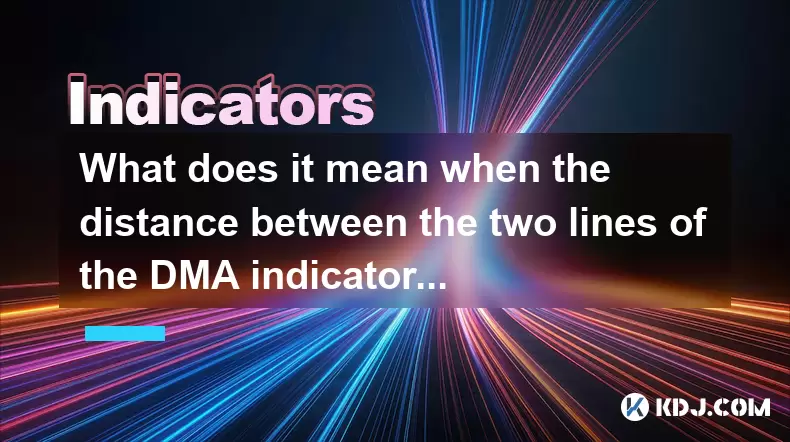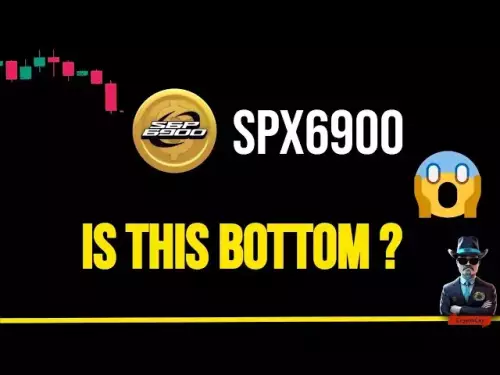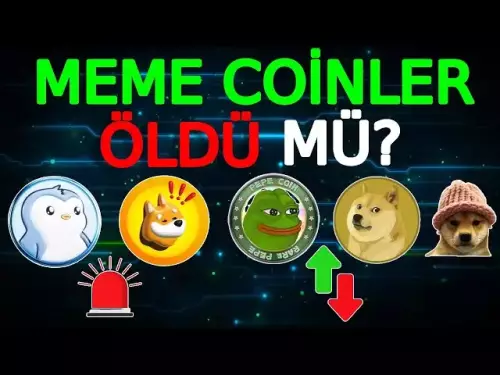-
 Bitcoin
Bitcoin $113100
-1.74% -
 Ethereum
Ethereum $4800
1.16% -
 XRP
XRP $3.041
0.36% -
 Tether USDt
Tether USDt $0.9999
0.02% -
 BNB
BNB $876.6
-0.40% -
 Solana
Solana $205.1
0.96% -
 USDC
USDC $0.0000
0.00% -
 Dogecoin
Dogecoin $0.2345
-0.10% -
 TRON
TRON $0.3629
0.40% -
 Cardano
Cardano $0.9260
1.91% -
 Chainlink
Chainlink $26.20
0.28% -
 Hyperliquid
Hyperliquid $46.04
2.89% -
 Sui
Sui $3.722
0.22% -
 Stellar
Stellar $0.4113
-0.53% -
 Ethena USDe
Ethena USDe $1.000
0.03% -
 Bitcoin Cash
Bitcoin Cash $590.3
0.39% -
 Avalanche
Avalanche $25.82
-0.01% -
 Hedera
Hedera $0.2504
-0.92% -
 Litecoin
Litecoin $119.1
-1.33% -
 UNUS SED LEO
UNUS SED LEO $9.598
0.03% -
 Toncoin
Toncoin $3.315
-1.69% -
 Shiba Inu
Shiba Inu $0.00001308
-1.02% -
 Uniswap
Uniswap $11.06
-2.10% -
 Polkadot
Polkadot $4.149
-1.10% -
 Dai
Dai $1.000
0.03% -
 Aave
Aave $350.7
-1.07% -
 Cronos
Cronos $0.1587
0.97% -
 Bitget Token
Bitget Token $4.664
-0.71% -
 Monero
Monero $274.5
3.42% -
 Ethena
Ethena $0.7021
-4.70%
What does it mean when the distance between the two lines of the DMA indicator suddenly narrows?
A narrowing DMA gap signals weakening momentum in crypto trends, suggesting caution as bullish or bearish strength may be fading.
Aug 10, 2025 at 02:28 pm

Understanding the DMA Indicator Structure
The DMA (Difference of Moving Averages) indicator is a technical analysis tool used in cryptocurrency trading to identify trends and potential reversal points. It consists of two primary lines: the DMA line, which represents the difference between two moving averages (typically a short-term and a long-term one), and the AMA (Average of Moving Averages) line, which is the moving average of the DMA line itself. Traders monitor the interaction between these two lines to assess momentum and trend strength. When the distance between the two lines shrinks, it often signals a change in market dynamics. This narrowing can reflect reduced momentum in the prevailing trend, suggesting that buying or selling pressure is weakening.
What a Narrowing DMA Indicates in Market Context
A sudden contraction in the gap between the DMA and AMA lines suggests that the short-term price momentum is converging with the longer-term average. In cryptocurrency markets, which are highly sensitive to sentiment and volatility, such a narrowing may occur after a strong directional move. For example, after a sharp rally in Bitcoin or Ethereum, profit-taking or hesitation among traders can cause price changes to slow. This results in the short-term moving average moving closer to the long-term one, reducing the difference captured by the DMA. The green-highlighted narrowing effect indicates a potential loss of trend strength. It does not confirm a reversal but suggests that the current trend may be losing steam, warranting caution.
How to Interpret the Narrowing in Different Market Phases
- When the narrowing occurs during an upward trend, it may indicate that bullish momentum is fading. Traders should watch for bearish confirmation signals, such as a crossover of the DMA line below the AMA line.
- If the narrowing happens in a downtrend, it could suggest that selling pressure is diminishing. This might precede a consolidation phase or a potential upward correction.
- During sideways or range-bound markets, a narrow DMA gap is typical, as price movements lack strong directional bias. A sudden narrowing after a breakout may imply that the breakout is losing validity.
- In highly volatile altcoin markets, such as those for Solana or Dogecoin, a narrowing can occur rapidly due to sudden liquidity shifts or whale activity. Monitoring volume alongside the DMA helps confirm whether the narrowing is due to genuine loss of momentum or low participation.
Step-by-Step Analysis of a DMA Narrowing Event
To effectively analyze a narrowing DMA in real-time trading:
- Open your trading platform (e.g., TradingView, Binance, or MetaTrader) and apply the DMA indicator to the price chart of the cryptocurrency you are monitoring.
- Set the moving average periods—common settings are 10-day and 50-day moving averages for the DMA calculation, with a 10-day smoothing for the AMA line.
- Observe the spacing between the DMA and AMA lines over recent candlesticks. Use the zoom function to inspect intraday changes if necessary.
- Check for volume trends—declining volume during the narrowing supports the idea of weakening momentum.
- Look for candlestick patterns near the narrowing point, such as doji, spinning tops, or small-bodied candles, which reinforce indecision.
- Cross-verify with other indicators like RSI or MACD to see if they also show divergence or flattening, increasing the reliability of the signal.
- Mark support and resistance levels on the chart to determine whether the narrowing is occurring near a key price zone, which could enhance its significance.
Distinguishing Between Noise and Meaningful Contraction
Not every narrowing of the DMA lines carries trading significance. Cryptocurrency charts are prone to false signals due to high volatility and low liquidity on certain exchanges or tokens. To filter out noise:
- Evaluate the duration of the narrowing. A sustained contraction over multiple candles is more meaningful than a one-bar anomaly.
- Compare with historical behavior. If the asset frequently experiences rapid DMA fluctuations, the current narrowing may be routine.
- Assess market context—news events, exchange outages, or macroeconomic announcements can cause temporary distortions. For instance, a narrowing during a major regulatory announcement may not reflect organic market movement.
- Use higher timeframes (e.g., 4-hour or daily charts) to confirm whether the narrowing appears across multiple intervals, increasing its reliability.
Practical Trading Responses to a DMA Narrowing
When the DMA lines begin to converge, traders have several tactical options:
- Reduce exposure in active positions, especially if the trend has been extended. This acts as a risk mitigation step.
- Set tighter stop-loss orders just below recent swing lows (in uptrends) or above swing highs (in downtrends) to protect gains.
- Wait for confirmation before entering counter-trend trades. A confirmed crossover or breakout from a consolidation zone adds validity.
- Shift to range-trading strategies, such as buying near support and selling near resistance, if the narrowing leads to sideways price action.
- Avoid aggressive entries until the DMA lines either diverge again or generate a clear follow-through signal in price.
Frequently Asked Questions
Can a narrowing DMA occur during a strong trend?
Yes, a temporary narrowing can happen even within a strong trend due to short-term consolidation. This does not invalidate the trend unless accompanied by volume decline and price stalling at key levels.
Does the DMA narrowing work the same across all cryptocurrencies?
The principle remains consistent, but effectiveness varies. Major coins like Bitcoin and Ethereum tend to produce more reliable signals due to higher liquidity, while low-cap altcoins may generate false contractions due to manipulation or thin order books.
How do I adjust DMA settings for different timeframes?
For shorter timeframes like 15-minute charts, use smaller moving average periods (e.g., 5 and 20). For daily charts, standard settings like 10 and 50 are effective. Always backtest adjustments on historical data for the specific asset.
Is the DMA indicator suitable for automated trading bots?
Yes, the DMA can be programmed into trading algorithms to detect convergence and trigger alerts or conditional orders. However, it should be combined with filters like volume thresholds or volatility checks to reduce false triggers.
Disclaimer:info@kdj.com
The information provided is not trading advice. kdj.com does not assume any responsibility for any investments made based on the information provided in this article. Cryptocurrencies are highly volatile and it is highly recommended that you invest with caution after thorough research!
If you believe that the content used on this website infringes your copyright, please contact us immediately (info@kdj.com) and we will delete it promptly.
- Layer Brett: The Dogecoin and Pepe Evolution?
- 2025-08-25 11:05:12
- MOG Digitech, ALT5 Sigma, and Web3 DeFi: Navigating the Future of Finance
- 2025-08-25 10:45:20
- Bitcoin, Corporate Champion, Strategic Buy: Decoding the Trends
- 2025-08-25 11:30:12
- Altcoins Primed for 2025 Bullish Breakouts: Hidden Gems and Market Movers
- 2025-08-25 11:30:12
- LayerZero's Stargate Acquisition: A New Era for Cross-Chain?
- 2025-08-25 12:05:26
- MAGACOIN Finance: Can This Crypto Presale Deliver Explosive Gains?
- 2025-08-25 09:25:14
Related knowledge

What does it mean when the +DI and -DI cross frequently in the DMI indicator but the ADX is flattening?
Aug 11,2025 at 03:15am
Understanding the DMI Indicator ComponentsThe Directional Movement Index (DMI) is a technical analysis tool composed of three lines: the +DI (Positive...

What does the sudden appearance of a "dark cloud cover" candlestick pattern during an uptrend indicate?
Aug 13,2025 at 11:35am
Understanding the 'Dark Cloud Cover' Candlestick PatternThe dark cloud cover is a bearish reversal pattern in technical analysis that typically appear...

What does it mean when the moving average, MACD, and RSI all send buy signals simultaneously?
Aug 11,2025 at 01:42pm
Understanding the Convergence of Technical IndicatorsWhen the moving average, MACD, and RSI all generate buy signals at the same time, traders interpr...

What does it mean when both the KDJ indicator and the RSI show overbought signals simultaneously?
Aug 13,2025 at 11:35am
Understanding the KDJ Indicator in Cryptocurrency TradingThe KDJ indicator is a momentum oscillator derived from the Stochastic Oscillator, widely use...

What does it mean when the price is trading above the SAR indicator but the red dots are densely packed?
Aug 09,2025 at 11:49pm
Understanding the SAR Indicator and Its Visual SignalsThe SAR (Parabolic Stop and Reverse) indicator is a technical analysis tool used primarily to de...

What does it mean when the candlestick chart forms a "Morning Star" but trading volume is sluggish?
Aug 12,2025 at 06:28pm
Understanding the Morning Star Candlestick PatternThe Morning Star is a three-candle bullish reversal pattern commonly observed in cryptocurrency pric...

What does it mean when the +DI and -DI cross frequently in the DMI indicator but the ADX is flattening?
Aug 11,2025 at 03:15am
Understanding the DMI Indicator ComponentsThe Directional Movement Index (DMI) is a technical analysis tool composed of three lines: the +DI (Positive...

What does the sudden appearance of a "dark cloud cover" candlestick pattern during an uptrend indicate?
Aug 13,2025 at 11:35am
Understanding the 'Dark Cloud Cover' Candlestick PatternThe dark cloud cover is a bearish reversal pattern in technical analysis that typically appear...

What does it mean when the moving average, MACD, and RSI all send buy signals simultaneously?
Aug 11,2025 at 01:42pm
Understanding the Convergence of Technical IndicatorsWhen the moving average, MACD, and RSI all generate buy signals at the same time, traders interpr...

What does it mean when both the KDJ indicator and the RSI show overbought signals simultaneously?
Aug 13,2025 at 11:35am
Understanding the KDJ Indicator in Cryptocurrency TradingThe KDJ indicator is a momentum oscillator derived from the Stochastic Oscillator, widely use...

What does it mean when the price is trading above the SAR indicator but the red dots are densely packed?
Aug 09,2025 at 11:49pm
Understanding the SAR Indicator and Its Visual SignalsThe SAR (Parabolic Stop and Reverse) indicator is a technical analysis tool used primarily to de...

What does it mean when the candlestick chart forms a "Morning Star" but trading volume is sluggish?
Aug 12,2025 at 06:28pm
Understanding the Morning Star Candlestick PatternThe Morning Star is a three-candle bullish reversal pattern commonly observed in cryptocurrency pric...
See all articles

























































































